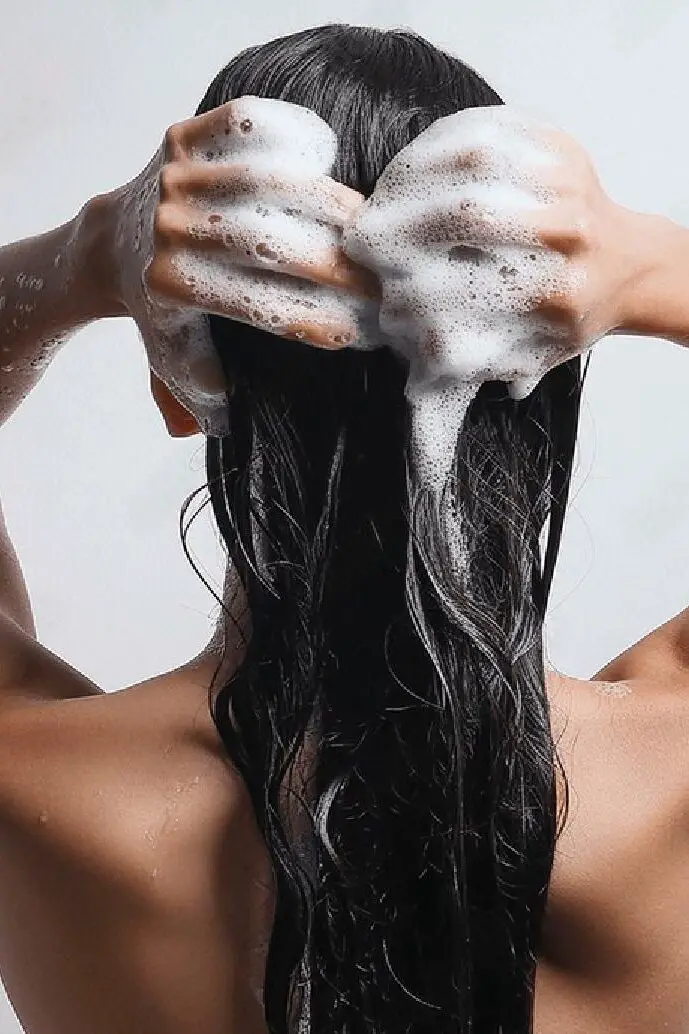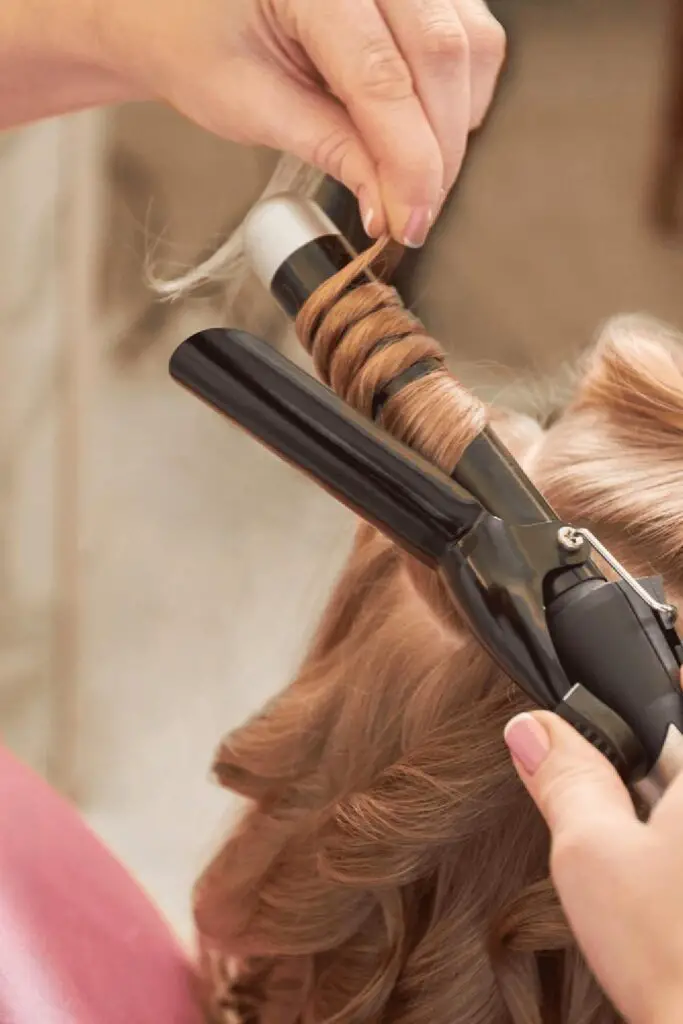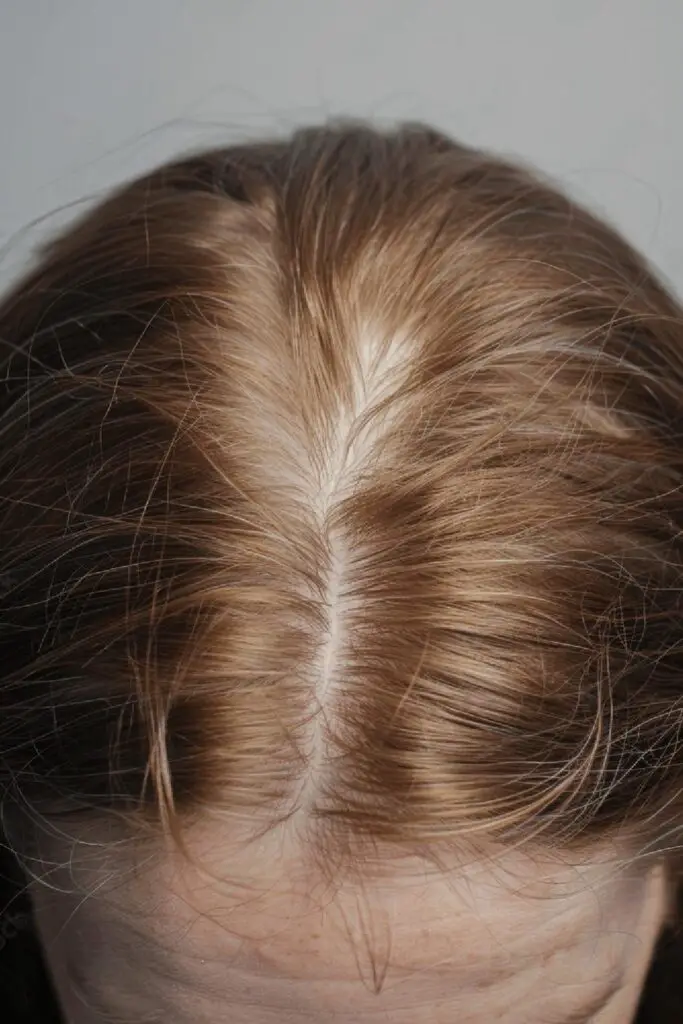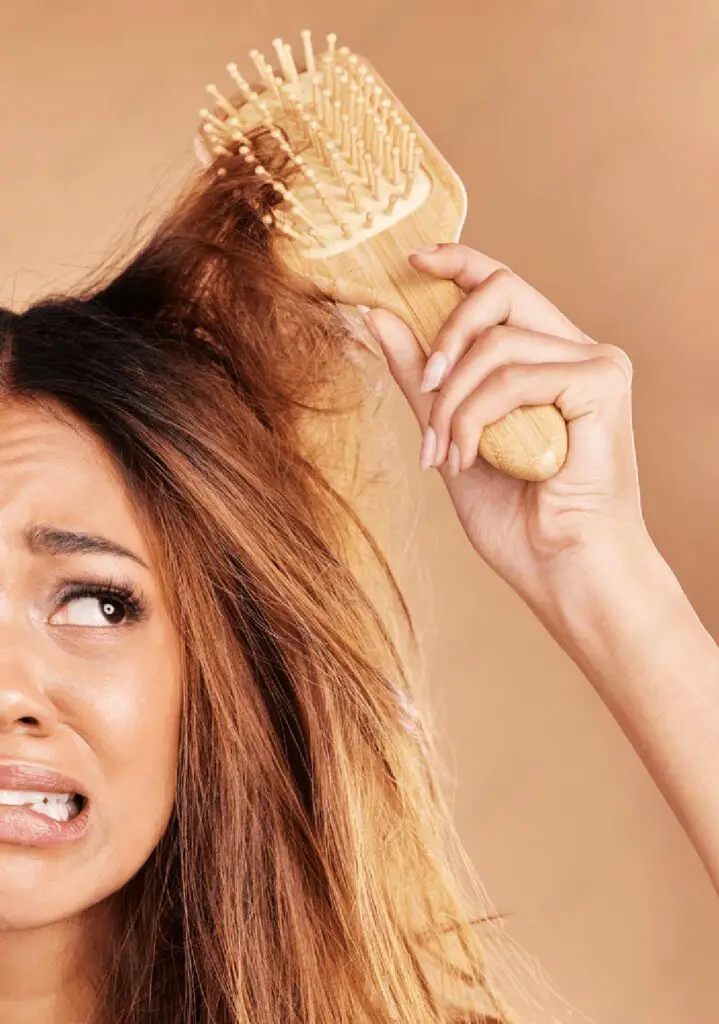Many people fall into common haircare pitfalls without realizing the damage they’re causing.
From daily routines to styling habits, certain practices can have a significant impact on hair health. Understanding these hair care no-nos is crucial to maintaining luscious locks and preventing long-term harm.
In this post, we’ll see five harmful haircare mistakes you should stop doing now.
Busy? Save this pin for later.
1. Overwashing Your Hair
Many people unknowingly fall into the trap of overwashing their hair, believing it’s the key to maintaining cleanliness.
However, this common hair care pitfall can have detrimental effects on your locks. Let’s dive into the impacts of overwashing and discover the optimal washing frequency for healthier hair.
Overwashing hair effects
Overwashing strips the scalp and hair of natural oils, leading to a vicious cycle. The sebaceous glands respond by producing more oil to compensate, making the hair appear greasier.
This results in dry, brittle strands and can even cause hair breakage. Additionally, it may lead to scalp issues such as irritation, itching, and dandruff.
Optimal hair washing frequency
The ideal washing frequency varies for each individual, depending on factors like age, ethnic background, hair type, and activity level.
Generally, washing every 2-3 days is sufficient for most people. However, those with curly or coarse hair may benefit from less frequent washing, as their hair tends to be drier.
African Americans, in particular, should aim to wash their hair at least twice a month to avoid dryness and breakage.
Overwashing hair solutions
To break the overwashing habit, start by gradually extending the time between washes. Embrace dry shampoo to absorb excess oils between washes, but remember it’s not a replacement for traditional shampooing.
Focus on cleansing the scalp rather than the entire hair length, and use a clarifying shampoo once or twice a month to remove product buildup.
2. Using Excessive Heat on Your Hair
Heat styling has become a staple in many hair care routines, but excessive use can have detrimental effects on hair health.
Understanding the impact of heat damage and learning proper techniques can help maintain luscious locks while still achieving desired styles.
Heat damage to hair
Frequent heat styling without proper protection can lead to significant hair damage. The intense heat breaks down the protein structure of hair, resulting in weakened strands that lose their natural shine and elasticity.
This damage can cause hair to become coarse, prone to tangling, and more susceptible to breakage.
In severe cases, heat-damaged hair may appear dull, limp, and frizzy, with curls losing their definition and straight styles lacking polish.
Proper heat styling techniques
To minimize damage, it’s crucial to adopt safe heat styling habits:
- Follow the 90% rule: Allow hair to air dry 90% before using heat tools.
- Use lower temperatures: Fine and gray hair should be styled below 200°F, while colored hair should not exceed 230°F.
- Limit frequency: Reduce heat styling sessions to maintain hair health.
- Point the nozzle downward: When blow-drying, direct airflow down the hair shaft to keep cuticles flat and boost shine.
Heat protection products
Incorporating heat protectants into your styling routine is essential. These products create a barrier between your hair and heat tools, helping to distribute heat evenly and reduce damage. Some effective options include:
- Leave-in conditioners with heat protection properties
- Thermal sprays designed to shield hair from high temperatures
- Lightweight serums that add shine while protecting against heat damage
3. Sleeping with Wet Hair
Wet hair sleeping risks
Going to bed with wet hair can have detrimental effects on hair health. When hair is wet, it becomes more elastic and fragile, making it prone to breakage and damage.
The friction between wet hair and the pillow can lead to tangling, split ends, and frizz.
Additionally, a damp environment on the scalp can create an ideal breeding ground for bacteria and fungi, potentially causing scalp infections or exacerbating existing dandruff.
Proper nighttime hair care
To minimize damage when sleeping with damp hair, consider these tips:
- Use a microfiber towel to gently blot excess water from hair.
- Apply a leave-in conditioner or hair oil to protect and moisturize strands.
- Loosely gather hair in a soft scrunchie or wrap it in a silk scarf to reduce friction.
- Sleep on a silk pillowcase to decrease friction and maintain hair moisture.
Alternatives to sleeping with wet hair
For healthier hair, it’s best to avoid sleeping with wet locks when possible. Try these alternatives:
- Wash hair earlier in the evening to allow time for air-drying.
- Use a blow dryer on a low heat setting to speed up drying time.
- If washing at night is necessary, consider using a diffuser attachment to minimize heat damage.
4. Ignoring Your Scalp Health
Importance of scalp care
A healthy scalp is the foundation for beautiful hair. Many people focus solely on their hair, overlooking the crucial role the scalp plays in overall hair health.
The scalp is an extension of your skin and requires just as much attention as the rest of your body. A well-maintained scalp creates an optimal environment for hair growth, ensuring that your locks remain strong, shiny, and vibrant.
Common scalp issues
Neglecting scalp care can lead to various problems. Dandruff, characterized by flaky, itchy skin, is a common concern. Seborrheic dermatitis, a more severe form of dandruff, can cause redness and oily scales.
Other issues include dryness, excessive oiliness, and inflammation. These conditions can result in discomfort, hair loss, and even permanent damage to hair follicles if left untreated.
Scalp care techniques
To maintain a healthy scalp, incorporate these techniques into your routine:
- Regular cleansing: Wash your hair with a suitable shampoo to remove dirt, oil, and product buildup.
- Exfoliation: Use a gentle scalp scrub to remove dead skin cells and promote circulation.
- Moisturizing: Apply scalp-specific treatments to keep the skin hydrated and balanced.
- Protection: Shield your scalp from environmental factors like UV rays and pollution.
5. Brushing Hair Incorrectly
Many people unknowingly make mistakes when brushing their hair, potentially causing damage and breakage. Let’s explore proper techniques, brush selection, and frequency to maintain healthy locks.
Proper hair brushing techniques
Start a few inches from the bottom, working up in short strokes to remove tangles. This method prevents pulling strands from the follicle and reduces breakage.
For wet hair, use a wide-tooth comb or specialized wet brush with flexible bristles. Curly hair benefits from brushing while damp, using a detangling product beforehand.
Choosing the right brush
Select brushes based on hair type and texture. Fine hair does well with soft bristles, while thick, curly hair may need firmer bristles.
Paddle brushes suit wavy hair, while round brushes add volume to straight or wavy hair. Boar bristle brushes redistribute natural oils, enhancing shine for all hair types.
Brushing frequency
Brush twice daily, morning and night, to distribute natural oils and remove loose hairs. However, avoid over-brushing, as it can cause damage.
Focus on quality rather than quantity, addressing tangles and knots without excessive strokes. Remember, gentle brushing stimulates the scalp, promoting blood flow and potentially encouraging hair growth.
Conclusion
Taking care of your hair involves more than just using the right products. It’s about understanding the impact of your daily habits and making informed choices.
By avoiding these five common mistakes, you’re setting yourself up for healthier, more vibrant hair.
Your hair will thank you for the extra care and attention. With patience and consistency, you’ll soon notice a positive difference in your hair’s look and feel.









Leave a Reply
You must be logged in to post a comment.